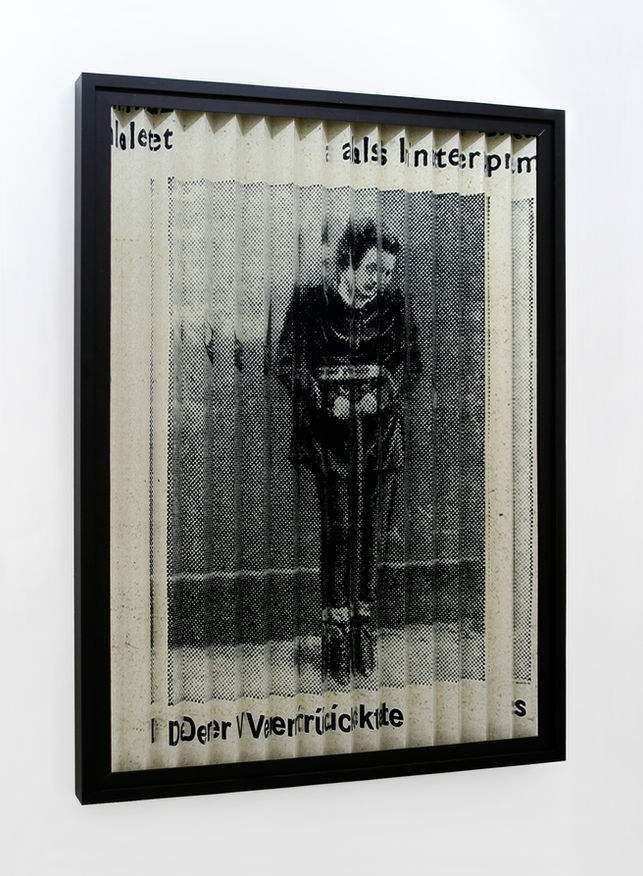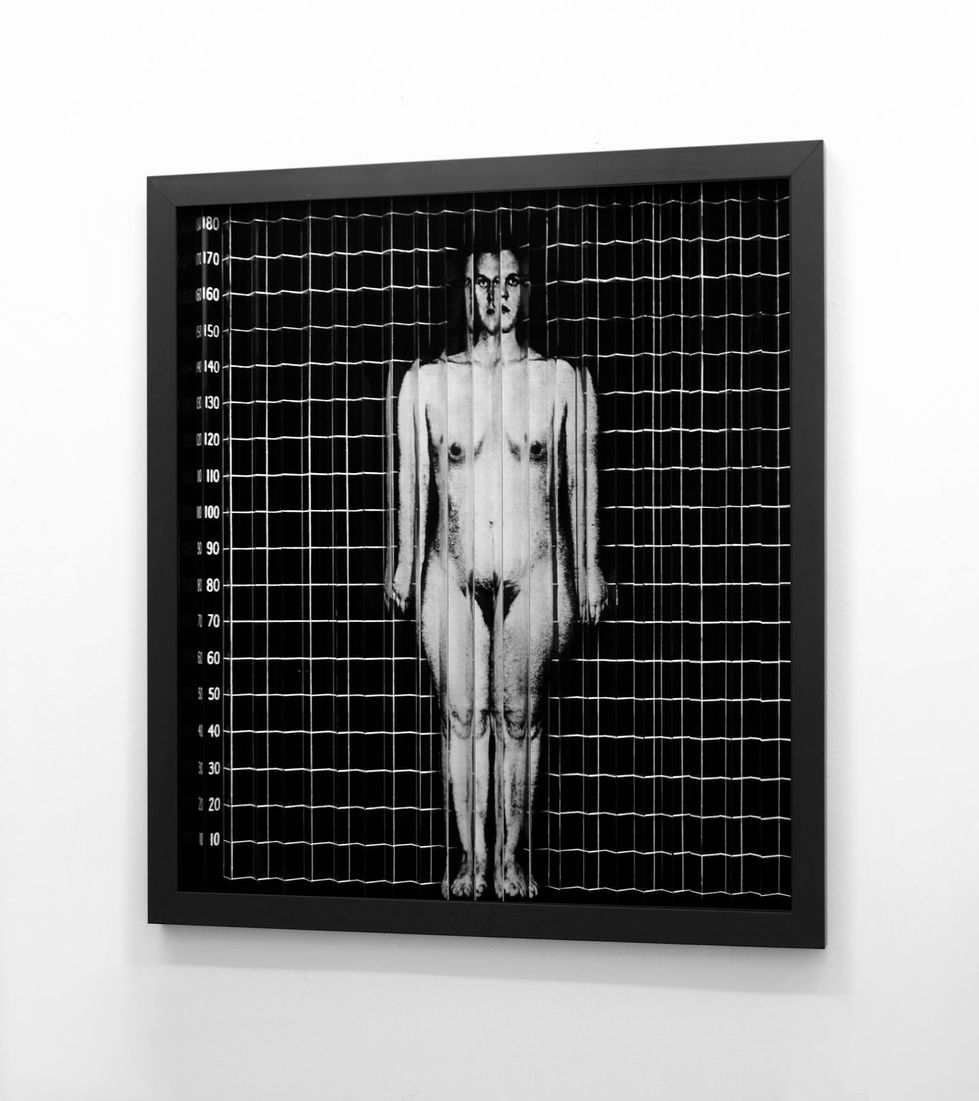Fresnel works are based on a research made upon the optical properties that can be achieved by folding a two dimensional plane into a three-dimensional structure, thus acquiring a double-faced feature (Leporello). These folded planes, when observed from different points of view, allow visualizing different images in relationships of continuous transformation. This device manages to create an interactive relationship between work and spectator, since the latter can compose and decompose the image at will through its own displacement in space, breaking the static frontality characteristic of the “pictorial format”, in a reversible process at will. In this way, contemplation becomes a spatiotemporal action, it becomes an event, altering the order of past-present-future relationships, and offering a new possibility to reorganize our linear perception of time and space. Consequently, the viewer’s point of view always implies a certain transformation of the contemplated image. From a more philosophical perspective, these works underline a constitutive fact of Modernity: the emergence of the Subject as articulator of the visual experience in interpretive terms. That is why the works emphasize their condition of being “open systems” allowing multiple readings, depending on both the physical point of view of the observer and his/her own interpretative subjectivity.





















































































































































































































































































































































Rigor Mortis I-VII. Hand made fresnel and digital printing. 5 x 30 x 46 cm each. 2009.
The name Rigor Mortis (stiffness of death) corresponds to the state of cadaveric stiffness that, under normal conditions, extends between 3 and 36 hours after death. Although the overall post mortem process has different phases, of which the most evident correspond to the decomposition and the skeletal, the bodies and parts preserved in formalin may express a certain tension that evokes the very moment of death, understood as the threshold between mobility and immobility, between an active vital principle that expresses itself as movement, and a final thanatic state of absolute fixity, of irreversible immobility. The proposed series, constituted by 7 works, is based on the visual exploration of the threshold between these two states, by transforming a natural hand posture into a “twitching” gesture, prior to mortuary laxity.

















